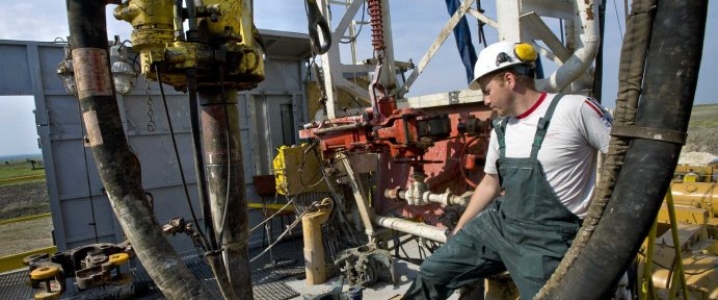Oil prices were up early on Monday, steadying at a two-month high last seen in mid-November, as the plunging U.S. rig count last week signaled a slowdown in shale drilling amid the lower price of oil.
At 10:34 EST on Monday, WTI Crude was up 0.44 percent at $54.28, while Brent Crude was up 0.38 percent at $62.94.
On Friday, oil prices surged as Baker Hughes reported a drastic reduction to the number of active oil and gas in the United States in the week. The total number of active oil and gas drilling rigs fell by 25 rigs, according to the report, with the number of active oil rigs decreasing by 21 to reach 852 and the number of gas rigs decreasing by 4 to reach 198. The oil and gas rig count is now 114 up from this time last year, 105 of which is in oil rigs.
The U.S. rig count last week was “the lowest level seen since May 2018,” said Warren Patterson, Head of Commodities Strategy at ING.
“The price volatility seen over the latter part of last year certainly appears to have made producers hesitant to pick up drilling activity,” Patterson noted.
Optimism that the U.S. and China could resolve some differences in the ongoing trade talks also pushed oil prices higher on Friday. Related: What’s Behind Oil’s Slow Flash Crash?
On Monday, prices held in the morning near the eight-week high reached at the end of last week, although signs of a slowing Chinese economic growth capped gains. China’s data showed that its economy grew by 6.6 percent in 2018, the slowest growth pace in almost three decades.
The easing of the U.S.-China trade tensions has allowed oil to refocus on supply fundamentals, which are constructive, Harry Tchilinguirian, Global Head of Commodity Markets Strategy at BNP Paribas, told Bloomberg on Monday. BNP Paribas sees Brent Crude rising to $65 and then aiming at $70 a barrel, Tchilinguirian said.
According to exchange data compiled by Bloomberg, as of last Friday, WTI Crude had gained 18 percent since the beginning of 2019, making this the best start to a year for the U.S. benchmark since 2001.
By Tsvetana Paraskova for Oilprice.com
More Top Reads From Oilprice.com:
- U.S. Oil Outlook Slammed By Lower Prices
- Oil May Never Return To The Triple-Digits
- Offshore Spending To Overtake Shale In 2019



















Shale wells suffer a steep depletion rates estimated at 70%-90% at the initial stages of production. This necessitate the drilling of more than 10,000 new wells every year at an estimated cost of $50 bn just to maintain production adding to their outstanding debts.
Moreover, with oil prices currently at the lower $60s a barrel, it doesn’t make sense to complete the DUCs when the breakeven prices for most shale oil producers is estimated at $60-$70 a barrel.
While the relatively low oil prices could be a factor, concurrent problems could be signalling the demise of the US shale oil industry in 5-10 years.
Still, the US Energy Information Administration (EIA) is projecting a rise in US oil production from 10.9 million barrels a day (mbd) in 2018 to 12.1 mbd in 2020 and 12.9 mbd in 2021.
Dr Mamdouh G Salameh
International Oil Economist
Visiting Professor of Energy Economics at ESCP Europe Business School, London